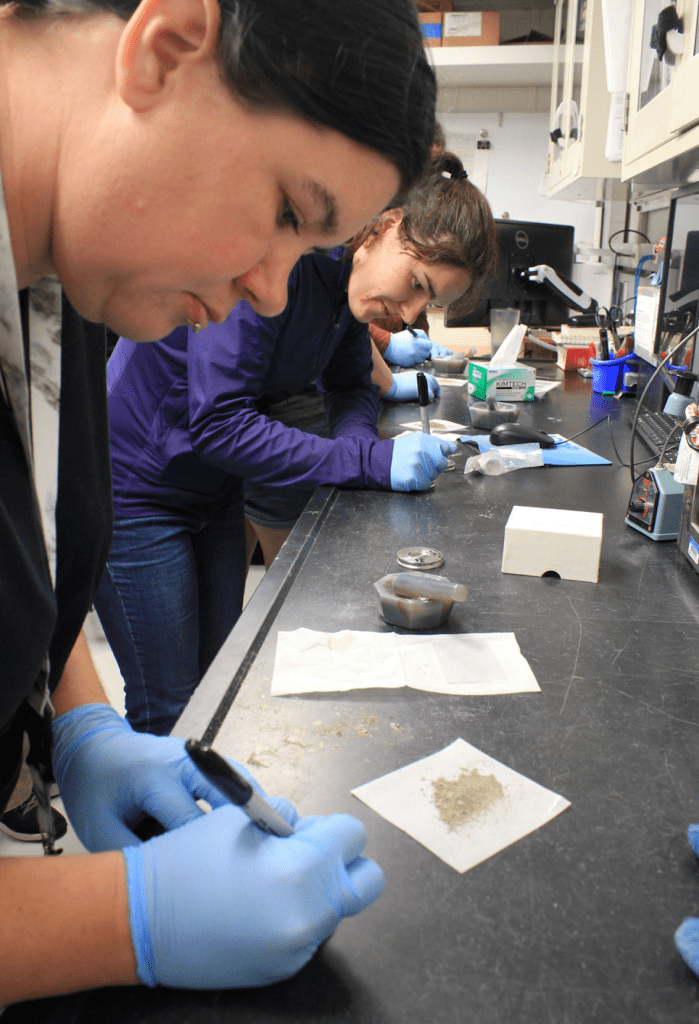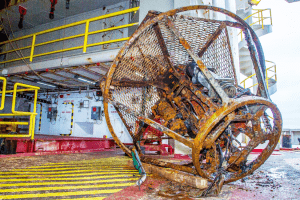
Reflecting on the Scientific Process
(blog written by Olivia Finlay)
The first half of this summer, I participated in Central Washington University’s Research Experience for Undergraduates . It was a nine week, crash course in research, rock glaciers, and permafrost (none of which I had previous experience in). Immediately following our program’s poster session, I flew down to Antofagasta, Chile to join the JR Academy, board the JOIDES Resolution and now here we are, cruising at 12 knots, about a week away from making port in San Diego. If there’s one overarching theme to these experiences, it’s this: research is a cyclical, curly-q, stop and go process. Your deadline will dictate what you present, but in truth, the project is never really over. The further in you get, the more questions you will have. The more questions you answer, the better you will understand your topic, and again, the more questions you will have.
As a part of the JR Academy curriculum, we were asked to form our own research question, develop methods, collect data, and eventually present our work in a mini-poster session. Coming off of the last project and the whirlwind week that lead up to that presentation, I was concerned. So much had changed during the nine weeks at Central, we were furiously working until the very end, so how in the world would I manage a 30-day project? How was I going to strategically pick a question that would lead me into a perfectly bite-sized project? Well, I wasn’t.
Initially, I had every intention of asking a question that would lead to a project with straight forward methods. I thought, “I don’t know anything about sediment core analysis but I’m onboard the mecca of deep-ocean drilling, surrounded by volumes of proceedings from the best and the brightest, so I’ll go from there…” And then the CORK came up.

Circulation Obviation Retrofit Kits, CORKs for short, are long term underwater observatories which can be installed in seafloor boreholes drilled by the JR. During this transit, they pulled one up. Through 3500 vertical meters of ocean, the CORK of Hole 896A came up out of the Pacific and onto the deck of the JR, covered in all sorts of curious stuff. By chance, I happened to walk past a scientist showing off some of the crud he had scraped from the frame. It was smelly, it was strange, and I just couldn’t help myself. My project topic was decided. My initial question “what is it?” clarified into “what material precipitated on the wireline CORK of Hole 896A after 18 years on the seafloor of the southern flank of the Costa Rica Rift”?

So with one week to go, have I completely answered my question?
No.
I’m currently looking at amorphous mixtures of iron, sulfur, magnesium, and a little bit of aluminum.
Do I have new methods I want to try?
Yes!
I could cut each of my samples in half and take subsamples from the interior out to the exterior! Maybe there are changes in composition as you move outwards? Maybe there’s structure somewhere in there that I’ve missed by looking at the bulk?!
Do I wish I had more time?
Absolutely.
It would be nice to report that I found minerals 1, 2, and 3, which precipitate under conditions A, B, and C, which tells us X, Y, Z about the deep ocean environment at Hole 896A. That answers the “who cares?” question of science pretty succinctly. But that’s not the reality of my project. I’ve had the opportunity to work with lab technicians to run mineral (X-Ray Diffraction), elemental (X-Ray Fluorescence), and carbonate content (coulometer) analyses, attempted to analyze and interpret my results, and am navigating through my own scientific process. And quite honestly, the punchline to my summer is this: science is messy, and maybe frantic, but if you’re doing it right, you won’t be asking the same question twice.
For a video on the CORK and more about science from the JR visit https://joidesresolution.org/multimedia/